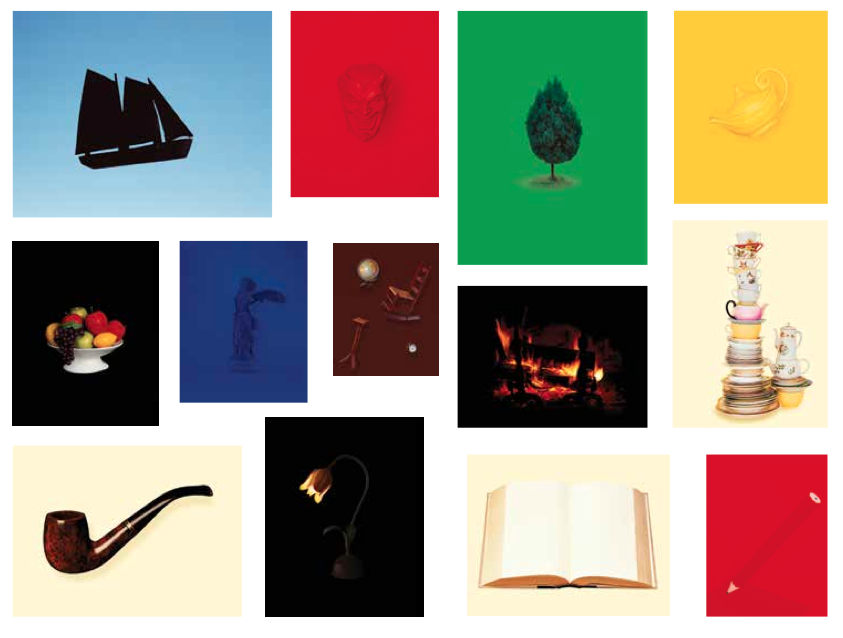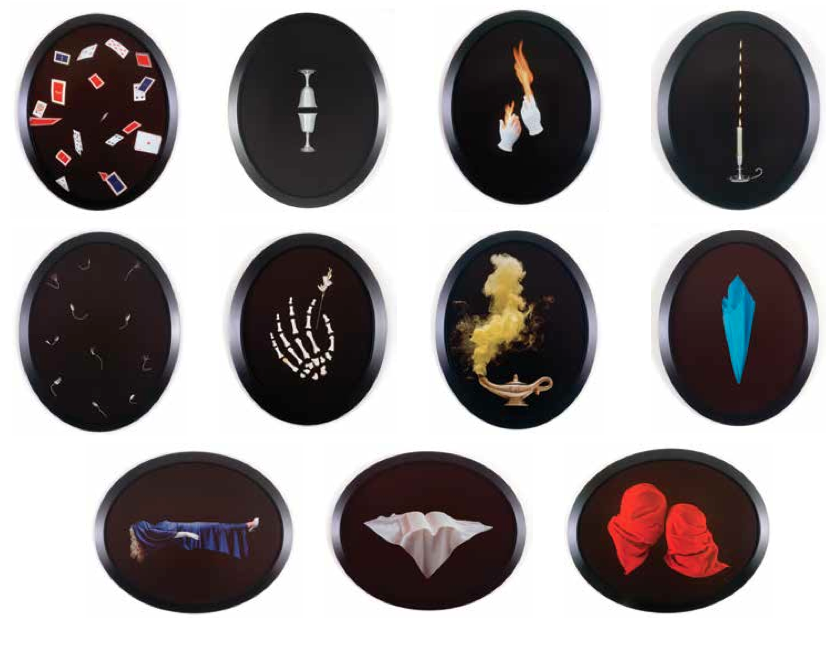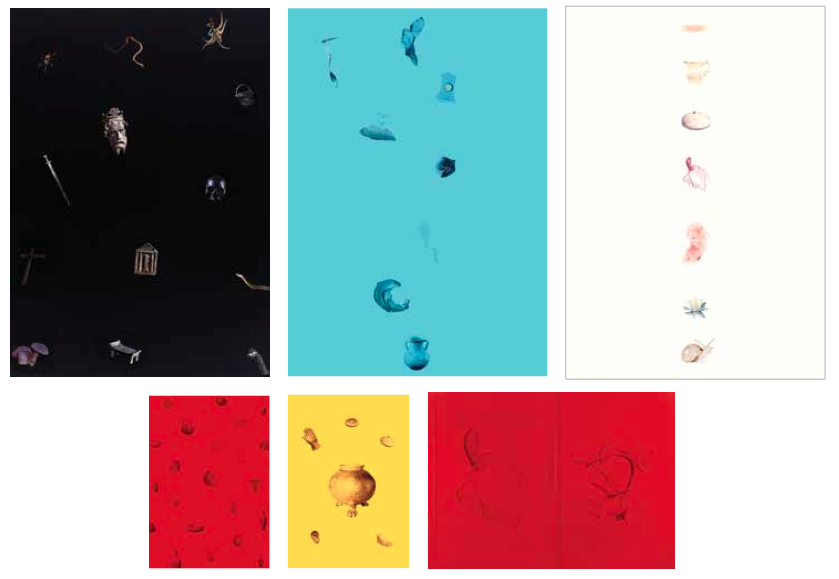“When we discuss a work of art or an art tradition, we are discussing a phenomenon which exists in an integral relationship with the entire complex of human social and historical forces defining the development of that work or tradition.” This quote, from “A Declaration of Independence” in the short-lived, art-theory magazine, The Fox, which she founded, indicates Sarah Charlesworth’s interest in defining what a work of art could be, as situated within an expansive media landscape of human activity. She was an artist who embraced all the possibilities of how an artwork could function and did so with a precise and meticulous eye. Her bold and confident works provoke thought.
Charlesworth, who died in 2013, is about to be the subject of a major retrospective, Doubleworld, opening in June at the New Museum of Contemporary Art in Manhattan. Often grouped with the Pictures Generation, which included artists such as Cindy Sherman, Richard Prince, Laurie Simmons, Barbara Kruger, and Sherrie Levine, Charlesworth investigated the impact of image proliferation in our culture, specifically from mass media. Pictures artists looked at how meanings are inscribed and decoded within the framework of the photographic image. These artists of Charlesworth’s generation scrutinized how we think about and understand the world through advertising, newspaper headlines, and magazine spreads, looking at such visual material with a political or sociological focus. In a 2011 Smithsonian Archives of American Art interview, Charlesworth affirmed that she was “interested in ideas about art and what art was and what the role of an artist in terms of exploring ideas was.”
 Artists like Charlesworth were interested in this type of inquiry to challenge the then-dominant tenets of Modernism, which was initially progressive in embracing industrialization and new materials, but soon became rigid and too pure. Postmodernism embraced multiple perspectives and traditions, becoming another approach to cultural codes that incorporated eccentric history, blending different styles rather than seeking the high abstraction of Modernism. In the late 1960s and early 1970s, when Charlesworth was coming of age as an artist, she was fundamentally involved in such debates. At Barnard she was prescient in understanding how art was shifting.
Artists like Charlesworth were interested in this type of inquiry to challenge the then-dominant tenets of Modernism, which was initially progressive in embracing industrialization and new materials, but soon became rigid and too pure. Postmodernism embraced multiple perspectives and traditions, becoming another approach to cultural codes that incorporated eccentric history, blending different styles rather than seeking the high abstraction of Modernism. In the late 1960s and early 1970s, when Charlesworth was coming of age as an artist, she was fundamentally involved in such debates. At Barnard she was prescient in understanding how art was shifting.
Sarah CharlesworthCharlesworth’s Barnard thesis was unconventional for an art history major. Rather than write the 30 pages expected of her, she petitioned Barbara Novak ’50 in the art history department and Dorothy Nyberg, in architecture, to be allowed to produce a visual document focused on the Solomon R. Guggenheim Museum. But first, Charlesworth had to teach herself photography. Then she used the medium to examine, in a radical way, the assertive Frank Lloyd Wright architecture, and by extension, the role of the museum as a framework for looking at art. Charlesworth examined the space of the museum and how individuals respond to it through 50 images, many focused on fragments of the Guggenheim’s unique structure. Her images splayed out the architectural details of the museum for investigation; they were visual documents, devoid of any textual passages. Charlesworth’s conceptual images had sufficient impact to impart a message. Conceptual art is often thought of as a linguistic proposition, especially in the hands of artists like Joseph Kosuth and Lawrence Weiner in whose work text was central, but she deployed visual material with conceptual effect through the elimination of language in her Barnard thesis. It might also be considered an early form of institutional critique, a strategy undertaken by artists who began to question the framework of how art was shown to reveal the power and social dynamics of art’s structures, and by extension, of everyday life
After Barnard, Charlesworth’s work continued to challenge conventions. In the mid-1970s she gained notoriety for a series of rephotographed front-page newspapers, the Modern History series, in which she blanked out the text, rephotographing only the masthead and the black-and-white pictures. The series exposed how newspapers covered the same news differently, revealing the biases specific to different publications. Modern History also showed a predominance of men depicted in positions of power or in ignominious situations on the front pages. Having been at Barnard in the late ’60s, Charlesworth was impacted by the nascent feminist movement; she later recalled going to the library, looking at various artworks themed to “the artist in his studio” and becoming depressed. Charlesworth said it took her a while to realize she was depressed because there were only men in the studios. It seemed that being a female artist was unlikely to produce success.

Neverland 2002
Charlesworth foregrounded feminist concerns in striking images that questioned gender difference in visual representation, indicating how images might predetermine attitudes about desire, sexuality, and power. Elegant details combine in her work to form crisply segmented images, as in her series Objects of Desire 1, begun in 1983, in which spare still lifes were cut and abstracted from printed materials. A work from the series, Red Scarf, shows a crimson flowing gossamer fabric, shaped by, yet cut away from the body, neck, and head that wore it in the original photograph. Charlesworth sutured this element to rephotograph it, isolating it on a crisp black background. Bride shows a “figure” without hands, feet, or cleavage, just the anatomy holding up a white dress with a classical train, corsage, and veil, cut out and rephotographed onto a monochromatic background; the same color also covers the frame that holds the image. She alludes to, but does not specify, meaning. She does point to cultural conventions and fetishized images of desire. Charlesworth is provocative and yet not seduced by such images in the way Andy Warhol was before her.

Natural magic 1992-1993
Mining the language of photography, Charlesworth was not identified as a photographer, but rather as an artist who deployed photography; such an identity was innovative in the late ’60s and early ’70s. Her strategy of using found printed information is often referred to as “appropriation art.” This has been a controversial practice at times, with artists like Richard Prince and Jeff Koons being sued for copyright infringement. The basic tenet of Charlesworth’s appropriation work was to provoke introspection through investigating mass-media image production, distribution, and reception. Further, Charlesworth and the Pictures artists problematized the previously long-held belief that photographs provide “truth” and “evidence.” The idea of originality was disrupted by the act of appropriation, supporting the fact that a photograph is never an original, but always a copy from a negative, able to be reproduced without one print being more original than the other.

Academy of Secrets 1989
Posthumously, Charlesworth’s estate is represented by Maccarone, a contemporary art gallery in the West Village run by Michele Maccarone, who presents exciting, edgy, and vital art exhibitions since she opened her eponymous gallery in 2001. While a student at Barnard, Michele Maccarone was already very engaged with the art world, working at Dia and a Tribeca gallery on White Street. She went to galleries in SoHo and recalls her great fascination and enjoyment in seeing the Charlesworth show, Natural Magic, at Jay Gorney Gallery in 1993. That show focused on a series of staged photographs of magic tricks, made in Charlesworth’s own studio, to play with ideas about truth in photography versus the smoke-and-mirrors tricks often used in historic photography and as part of marketing and Photoshop manipulations in commercial photography. In one image, a woman levitates, in another there is bent silverware: this is magic as commentary on the art of photography. For Maccarone, the show was memorable.
After graduation from Barnard, Maccarone gained years of experience as the director of Luhring Augustine, the blue-chip Chelsea gallery. She decided to go out on her own when she was 26; her first location was in Chinatown before she moved the gallery to the West Village. She is about to launch an additional location in Los Angeles, on South Mission Road near the downtown arts district, and expand her gallery space for even more extensive exhibitions of artists like Charlesworth.

Modern History: Herald Tribune, September 1977

Modern History: Arc of Total Eclipse, February 26, 1979
While both Barnard alumnae seemed destined to know each other, Charlesworth died before they could meet, yet the artist’s impressive career trajectory and incisive body of work left a lasting impression on Maccarone, who last year presented Objects of Desire: 1983–1988, Charlesworth’s first show at the gallery.
Only after initiating discussions with the estate was the Barnard connection discovered, making Maccarone all the more convinced about representing this major and influential artist. She says, “I was really excited about Sarah having gone to Barnard, as it is a great point of confluence.” Unlike many other galleries, Maccarone is committed to exhibiting the work of women artists, as she says, she is “always looking to show more women.” Charlesworth, whose work changed the definition of art and artists, influenced many women artists working today, and Maccarone seems intent on preserving her legacy for the future, providing space for other innovators to follow in Charlesworth’s path.•
Doubleworld runs at the New Museum, 235 Bowery, June 24–September 20.
To see more of Sarah Charlesworth’s art, go to sarahcharlesworth.net.
Visit Maccarone’s website for current and upcoming exhibitions: maccarone.net.
